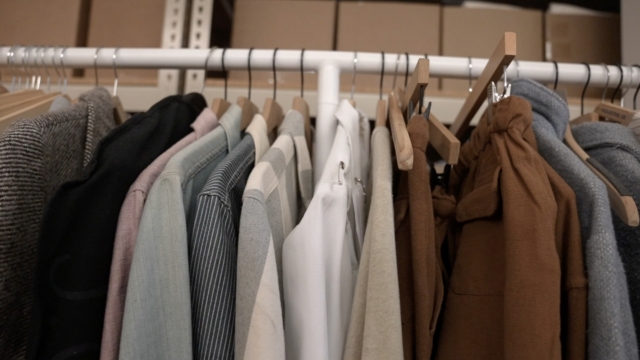Embedded in our culture and prevalent in most clothing stores, fashion is distinguished by gender. But in this era of focusing on inclusivity, gender-bending fashion is rewriting the rules of who wears what. Stuzo Clothing, based in Los Angeles, is one example of gender-neutral clothing that doesn't define the person wearing them; rather the roles are reversed.
"I wanted it to reflect that freedom of whether you do identify with any of the genders out there or not, you're free to be whoever," said Stoney Michelli Love, CEO and founder of Stuzo Clothing.
Love explains that when she started, this concept barely existed.
"I would have a lot of people like checking in on me, my mother, my ex-boyfriend, and all these people asking me if I am still gay and I'd be like 'Yup, still gay,'" Love said. "It literally put a light bulb in my head and I was like 'Let me sketch this and put it on a t-shirt.'"
Nearly 15 years later, her brand is still a rare find. From mannequins to colors and separated sections, fashion typically follows gender constructs. There are about 1.2 million LGBTQ+ people in the U.S. that identify as nonbinary, and a recent survey found that as many as 36% of U.S. consumers have purchased fashion outside of their gender identity.
SEE MORE: Is the fashion industry living up to promises of size inclusivity?
Sophia Weltman is with UCLA's School of Theater, Film and Television. As a costume designer, she has gotten to bring gender fluidity to the outfits used in performances.
"So much of those rules are so arbitrary. Like pink and blue, right? Pink was originally for boys and blue was originally for girls ... until like the 40s when some marketer published a thing that said blue is for boys and pink is for girls," Weltman said. "Because of the history of power with gender and with cisgender, I think it's really important that we embrace an aesthetic fluidity that helps people feel like they can be what they want to be."
In recent years, these concepts have started to show up on fashion's most prominent runways. While conversations are happening in all parts of the industry, the shift has not translated to most mainstream brands.
"The fashion industry is really weird because it's one of the most innovative industries in the world but it's also one of the most archaic," said Eric Holbreich, the design director for Industry of All Nations.
Industry of All Nations develops quality staple clothing in collaboration with local communities around the world. They believe less is more, which is one reason their items are gender-fluid.
"If we're creating something without need, that's waste. And we don't want to create waste," said Michael Hammer, the Operations Manager for Industry of all Nations.
SEE MORE: These thrifters are helping the planet while keeping it fashionable
"So it's really not thinking 'Oh I need to make this dress for a 27-year-old architect named Anna' or 'I need to make this pair of pants for like a 42-year-old lawyer named Ben.' It's really about the process and why the clothes are made. At the end of the day it's clothing for the people not for a person," Holbreich said.
From the classroom to the clothing rack, these experts say times are changing. Education could put this conversation at the forefront and dress codes could be enhanced.
"Disassociating some of these design codes from a binary helps us get in better touch with what they could really signify," Weltman said. "I've had fashion history classes, I've had costume history classes, I've had industry classes but there's no real space that I've seen devoted to social and political theory."
There is still a long way to go to change the industry, but these designers say conversations are a start to challenging gendered conceptions of clothing.
Trending stories at Scrippsnews.com




